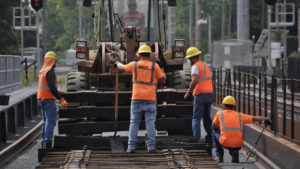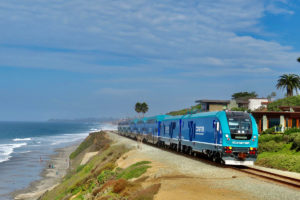N.Y. losing track of rail project funds?
Written by jroodFreight railroad officials are wondering what happened to the tens of millions of dollars from a 2005 bond issue that was to be invested in rail and port improvements, Albany Times-Union reports. Just $70 million of the $186 million earmarked has been spent, none of that in the past two years. Instead, rail officials grouse, state officials continue to review $200 million in grant requests submitted before Oct. 1, 2008.
"For the last two
years, not a dime has flowed," said Norman Schneider, executive director
of Railroads of New York.
On March 17, railroad
executives met with legislators and state transportation officials to seek more
financial support. They touted railroads’ energy efficiency — one gallon of
fuel can move a ton of freight 435 miles — and their role in manufacturing.
Schneider said other states
are marketing their rail connections to manufacturers, something that could
hurt New York’s effort to compete for jobs.
Meanwhile, the number of
people in the state’s department of transportation devoted to rail issues has
fallen from 200 in the late 1970s to fewer than 50 currently, Schneider said.
While major railroads such
as CSX Transportation, Norfolk Southern and CP Rail have upgraded tracks and
bridges, the state’s short-haul railroads haven’t kept up and may not be able
to handle the heavier railcars coming into use. They’re barely profitable,
covering operating expenses but unable to make the heavy capital investments
required to upgrade tracks and bridges, Schneider said.
Historically high property
taxes also led railroads to pull up tracks that weren’t being used. Tax changes
enacted about seven years ago provided some relief, but the capacity
constraints continue, and congestion is a growing problem along such routes as
CSXT’s main line between Schenectady and Buffalo, where dozens of freight
trains and at least eight Amtrak passenger trains share the tracks each day.
Meanwhile, freight
railroads are beginning to capture more freight. Railex USA, for example, now
moves produce in dedicated unit trains that travel from California and
Washington State four times a week to a distribution center in Rotterdam.
And tanker trains carrying
ethanol move from the Great Plains and Midwest to the Port of Albany on a
regular basis, where it is loaded into barges to be shipped to gasoline
refineries along the East Coast.
Schneider reported a
positive reaction from officials March 17, including acting Transportation
Commissioner Stanley Gee. But, Schneider added, getting the necessary funding
won’t be easy given the state’s own precarious finances.





